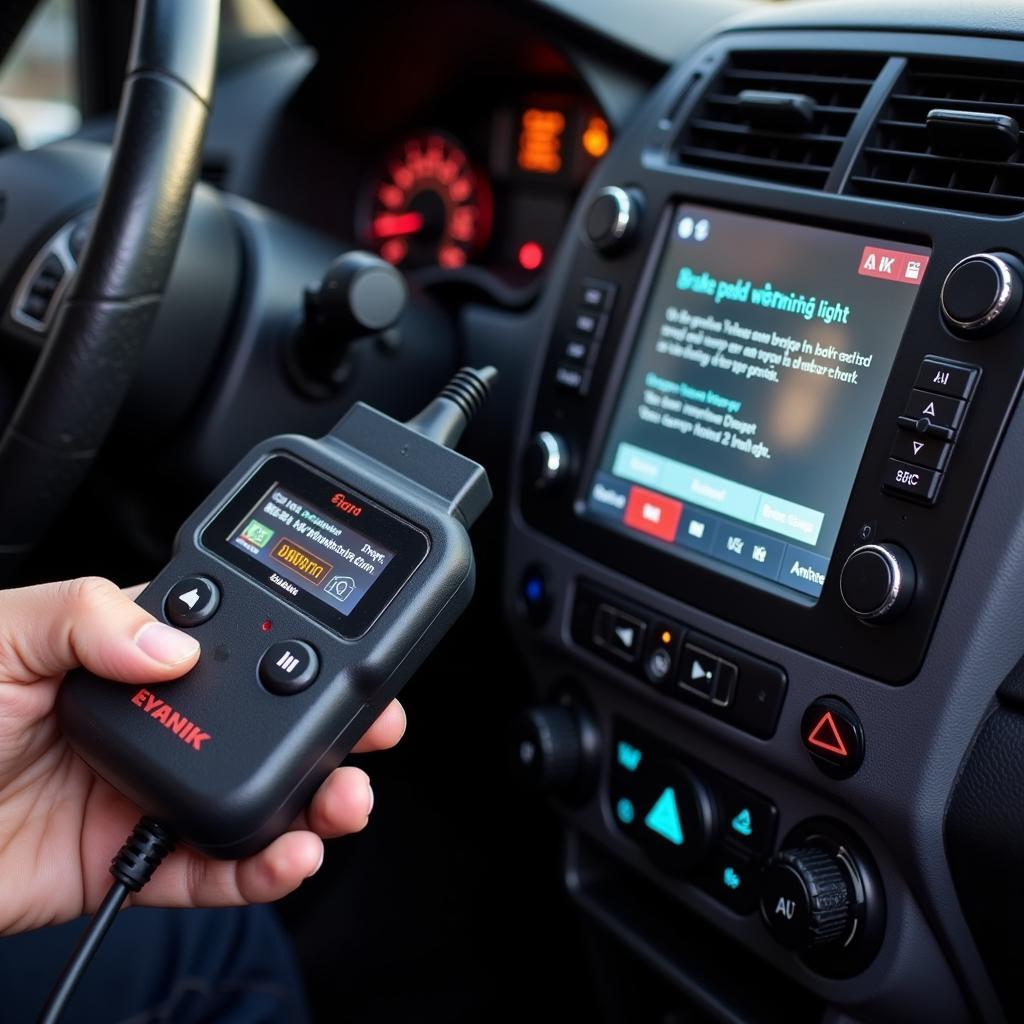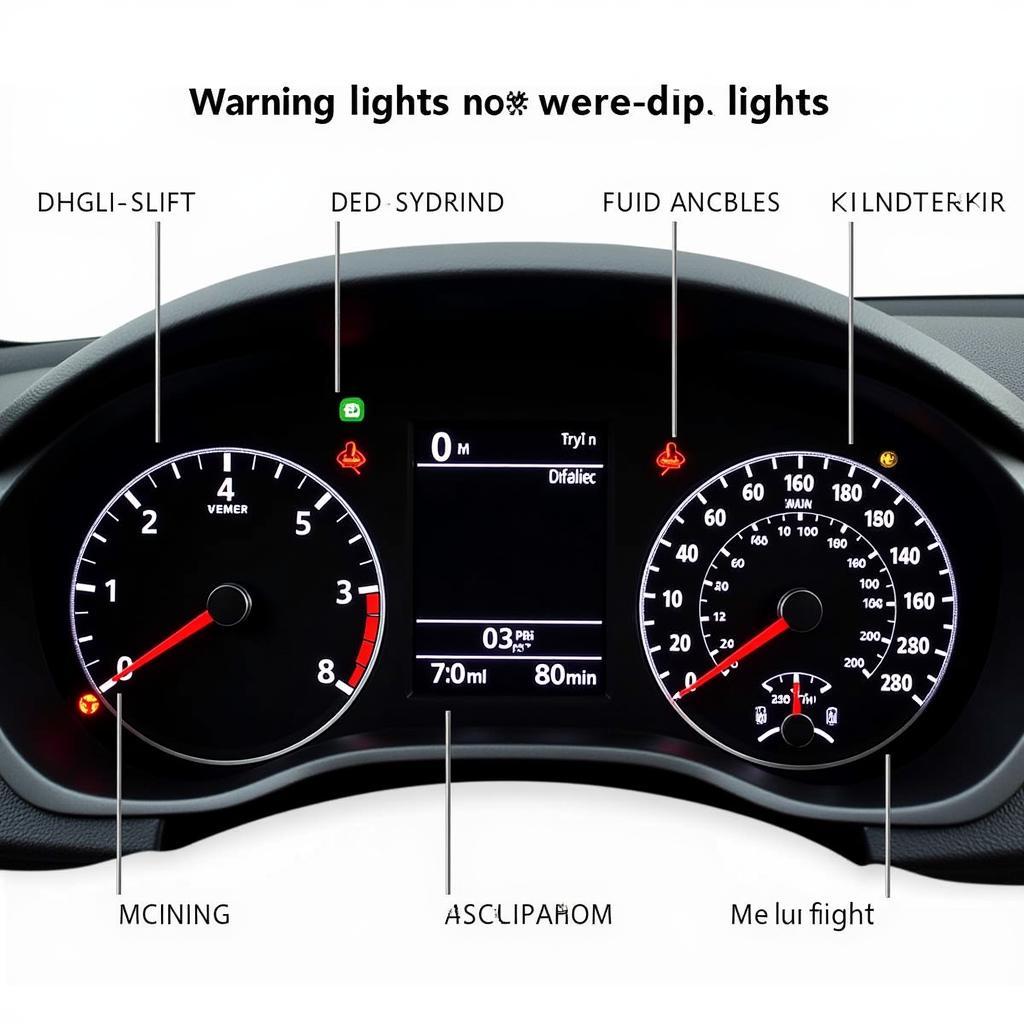The dreaded brake pad warning light on your Ford Transit van can be a real headache. Knowing how to perform a transit brake pad warning light reset can save you time and money, and this guide will walk you through everything you need to know. We’ll cover the common causes, diagnostic steps, and the proper reset procedures for various Transit models.
Understanding the Transit Brake Pad Warning Light
The brake pad warning light is part of your Transit’s braking system monitoring. It illuminates when the brake pads wear down to a predetermined thickness, signaling the need for replacement. Ignoring this warning can lead to further damage, like scoring the brake rotors, and compromise your safety. Don’t delay addressing this issue. A quick check can save you from more costly repairs down the road. If your key fob is malfunctioning, it could be due to a dead battery. You can learn more about it in our guide on battery dead in key fob.
Common Causes of the Warning Light
While worn brake pads are the most frequent culprit, other issues can trigger the warning light. These include:
- Faulty brake pad wear sensor: The sensor itself can malfunction, sending a false signal even if the pads are fine.
- Damaged wiring: A broken or frayed wire leading to the sensor can disrupt the signal.
- Low brake fluid: In some cases, low brake fluid can trigger the warning light as a secondary safety measure. Be sure to check your brake fluid level regularly.
- Issues with the ABS system: While less common, problems with the Anti-lock Braking System (ABS) can sometimes activate the brake pad warning light.
Diagnosing the Problem
Before attempting a transit brake pad warning light reset, it’s crucial to diagnose the root cause. Start by visually inspecting the brake pads. If they appear thin, replacement is likely necessary. Next, check the brake pad wear sensor for damage or disconnection. If you’ve recently jump-started your car and are experiencing battery issues, check out our article on car battery not working after jump start.
Checking the Brake Pad Wear Sensor
The sensor is a small wire embedded within the brake pad material. When the pad wears down sufficiently, the sensor makes contact with the rotor, completing a circuit and illuminating the warning light. You can use a multimeter to test the sensor’s continuity. If the sensor shows continuity even with new brake pads, it’s likely faulty.
“Always prioritize safety,” advises John Miller, a seasoned automotive technician with over 20 years of experience. “Never ignore a brake warning light. A thorough diagnosis is key to ensuring your brakes are functioning correctly.”
Resetting the Transit Brake Pad Warning Light
The reset procedure can vary slightly depending on the Transit model year and whether the van is equipped with the Electronic Parking Brake (EPB). Consult your owner’s manual for the specific procedure for your vehicle. For issues with your car battery draining overnight, read our guide on brand new car battery dead overnight.
Manual Reset Procedures
Some Transit models allow for a manual reset using a combination of button presses on the instrument panel or steering wheel controls. This usually involves cycling the ignition key while holding specific buttons.
Diagnostic Tool Reset
For more complex systems or if the manual reset fails, a diagnostic scan tool may be required. These tools can communicate with the vehicle’s computer to clear the warning light and reset the braking system monitoring. If your GMC Sierra is experiencing battery issues, you can find helpful information in our article 2018 gmc sierra battery problems.
 Diagnostic Tool Resetting Transit Brake Warning Light
Diagnostic Tool Resetting Transit Brake Warning Light
Preventing Future Issues
Regular brake inspections are essential for preventing future warning light activations. This includes checking the brake pad thickness, the condition of the rotors, and the brake fluid level.
“Preventive maintenance is the best way to avoid costly repairs and ensure your vehicle’s safety,” explains Sarah Chen, an automotive engineer specializing in brake systems. “Regular checks can identify potential issues early on, saving you time and money in the long run.”
Conclusion
Addressing the transit brake pad warning light promptly is crucial for your safety and the longevity of your vehicle. By following the steps outlined in this guide, you can diagnose the problem and perform the necessary reset. Don’t forget to prioritize regular brake maintenance to prevent future issues and ensure your Transit’s braking system remains in optimal condition. If you are concerned about the electrical system in your vehicle, consider checking our article on normal parasitic draw car battery.


